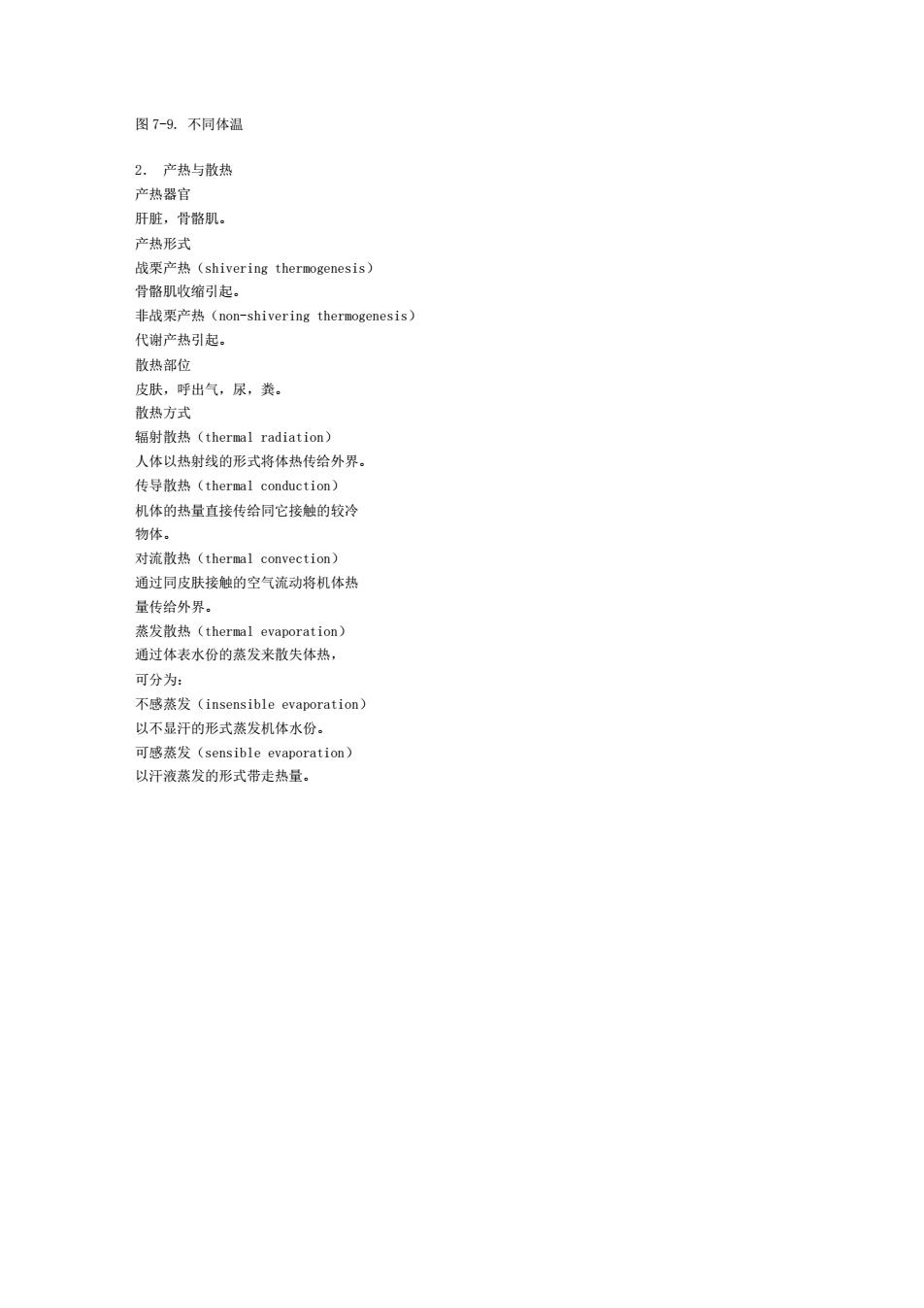
粘液性水肿 正人 甲状泉肿瘤 突眼性甲状腺 *2 16203005076090300ǔ020 图7-8.基础代谢率 第二节体温(body temperature) 1.体温的概念 恒温动物(homeothernic animal) 变温动物(poikilothermic animal 体表温度(shel1 temperature) 体核温度(core tem erature
图 7-8. 基础代谢率 第二节 体温(body temperature) 1. 体温的概念 恒温动物(homeothermic animal) 变温动物(poikilothermic animal) 体表温度(shell temperature) 体核温度(core temperature)

图7-9.不同体温 2.产热与散热 产热墨官 肝脏,骨路肌。 产热形式 战栗产热(shivering thermogenesis) 骨酪肌收缩引起。 非战栗产热(non-shivering thermogenesis) 代谢产热引起。 散热部位 皮肤,呼出气,尿,粪 敬热方式 铝射散热(ther园1 radiation) 人体以热射线的形式将体热传给外界 机体的热量直接传给同它接触的较冷 物体。 对流散热(therral convection) 通过同皮肤接触的空气流动将机体热 量传给外界。 蒸发散热(thermal evaporation 通过体表水份的蒸发来散失体热 可分为: 不感蒸发(insensible evaporation 以不显汗的形式蒸发机体水份 可感蒸发(sensible evaporation) 以汗液蒸发的形式带走热量
图 7-9. 不同体温 2. 产热与散热 产热器官 肝脏,骨骼肌。 产热形式 战栗产热(shivering thermogenesis) 骨骼肌收缩引起。 非战栗产热(non-shivering thermogenesis) 代谢产热引起。 散热部位 皮肤,呼出气,尿,粪。 散热方式 辐射散热(thermal radiation) 人体以热射线的形式将体热传给外界。 传导散热(thermal conduction) 机体的热量直接传给同它接触的较冷 物体。 对流散热(thermal convection) 通过同皮肤接触的空气流动将机体热 量传给外界。 蒸发散热(thermal evaporation) 通过体表水份的蒸发来散失体热, 可分为: 不感蒸发(insensible evaporation) 以不显汗的形式蒸发机体水份。 可感蒸发(sensible evaporation) 以汗液蒸发的形式带走热量